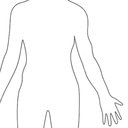Efficacy of the Omega-3 Index in predicting non-alcoholic fatty liver disease in overweight and obese adults: a pilot study.
Түлхүүр үгс
Хураангуй
Non-alcoholic fatty liver disease (NAFLD) is an independent predictor of CVD in otherwise healthy individuals. Low n-3 PUFA intake has been associated with the presence of NAFLD; however, the relationship between a biomarker of n-3 status - the Omega-3 Index - and liver fat is yet to be elucidated. A total of eighty overweight adults (fifty-six men) completed the anthropometric and biochemical measurements, including the Omega-3 Index, and underwent proton magnetic resonance spectroscopy assessment of liver fat. Bivariate correlations and multiple regression analyses were performed with reference to prediction of liver fat percentage. The mean Omega-3 Index was high in both NAFLD (intrahepatic lipid concentration≥5·5 %) and non-NAFLD groups. The Omega-3 Index, BMI, waist circumference, glucose, insulin, TAG, high-sensitive C-reactive protein (hsCRP) and alanine aminotransferase (ALT) were positively correlated, and HDL and erythrocyte n-6:n-3 ratio negatively correlated with liver fat concentration. Regression analysis found that simple anthropometric and demographic variables (waist, age) accounted for 31 % of the variance in liver fat and the addition of traditional cardiometabolic blood markers (TAG, HDL, hsCRP and ALT) increased the predictive power to 43 %. The addition of the novel erythrocyte fatty acid variable (Omega-3 Index) to the model only accounted for a further 3 % of the variance (P=0·049). In conclusion, the Omega-3 Index was associated with liver fat concentration but did not improve the overall capacity of demographic, anthropometric and blood markers to predict NAFLD.





